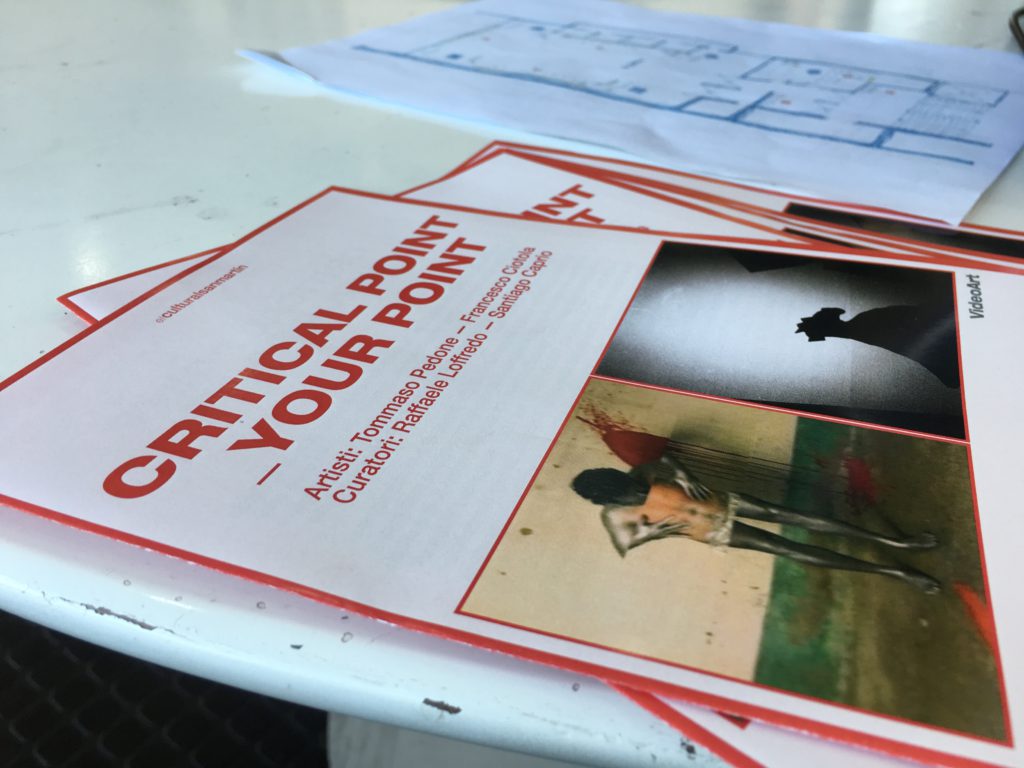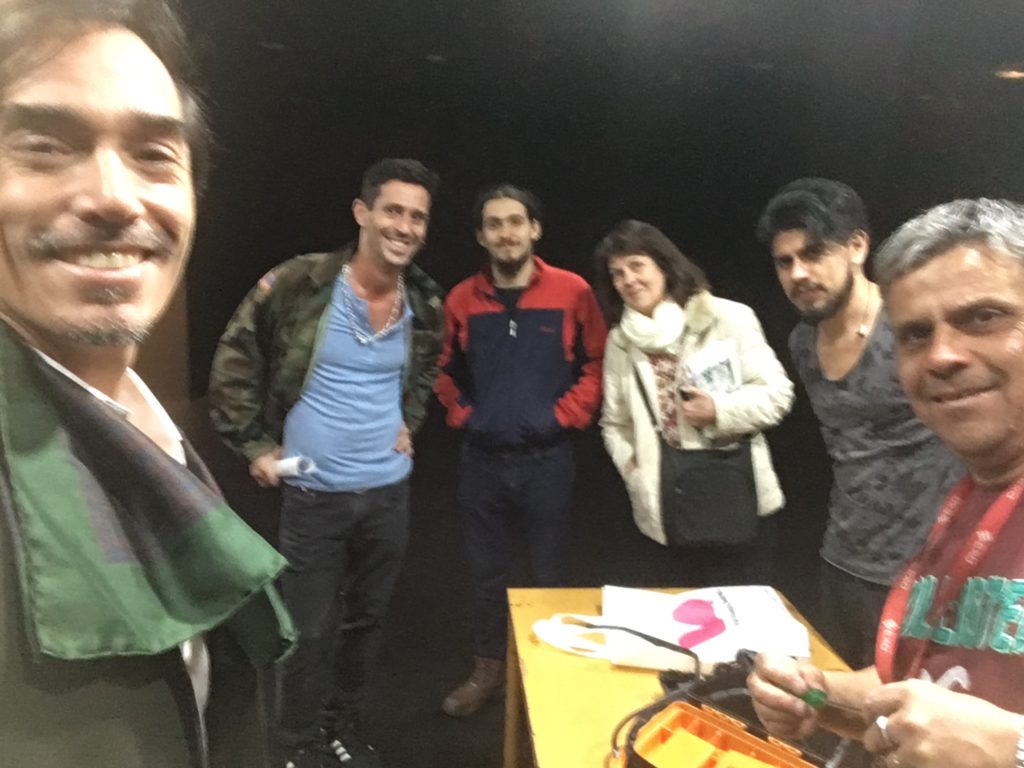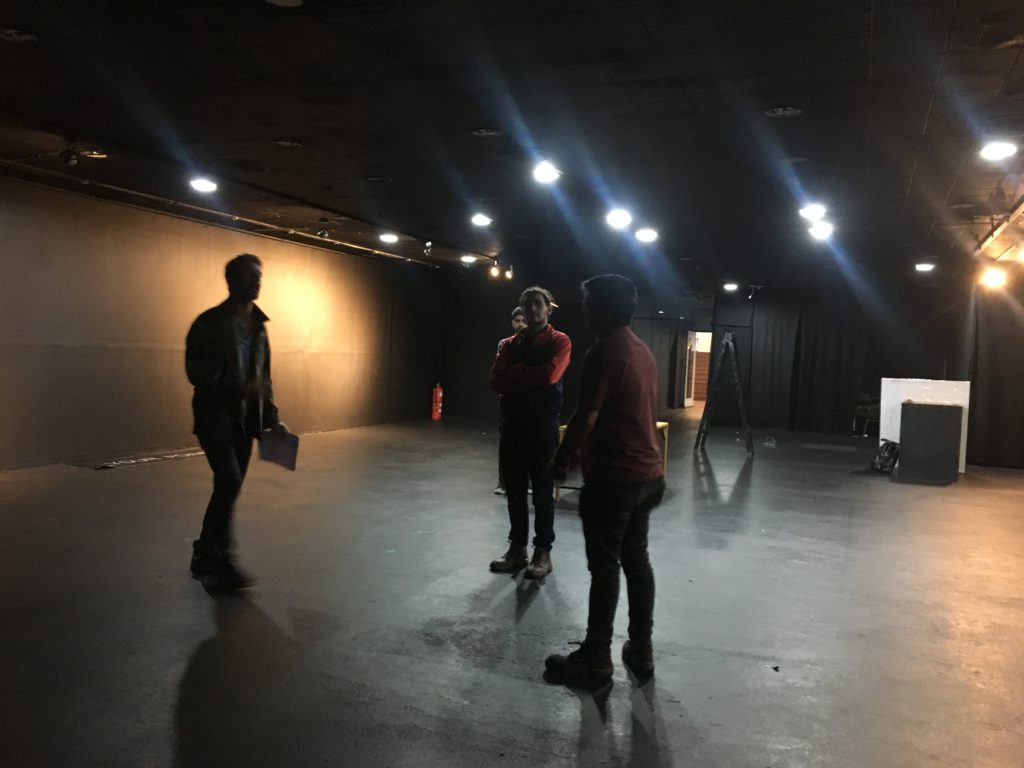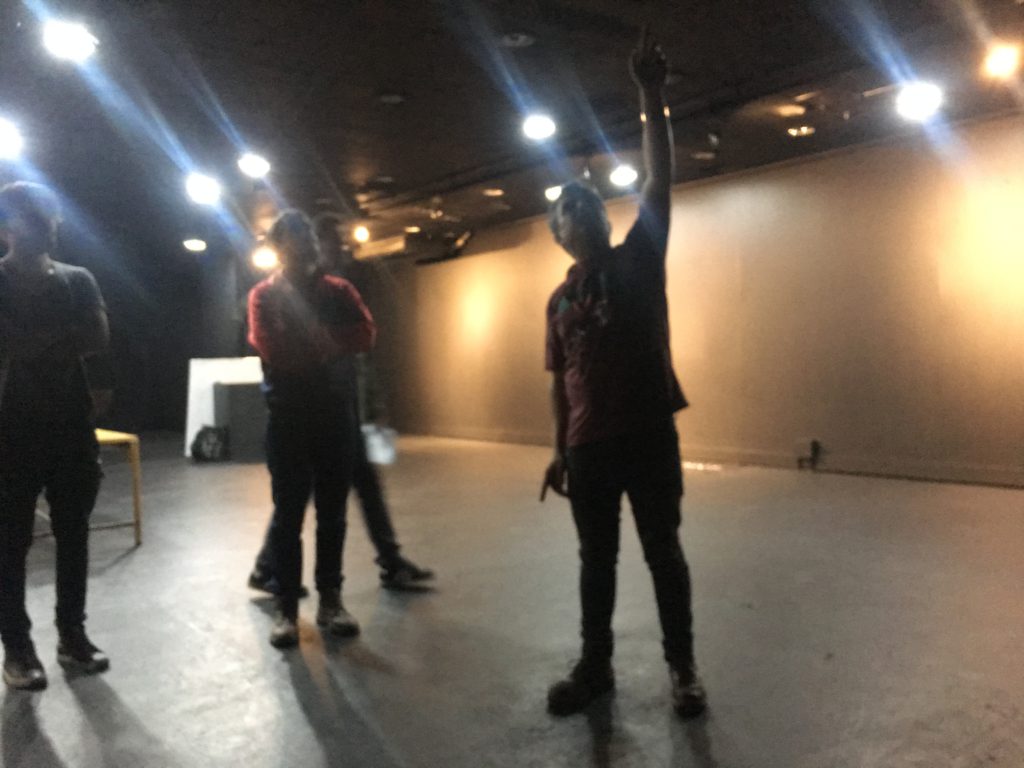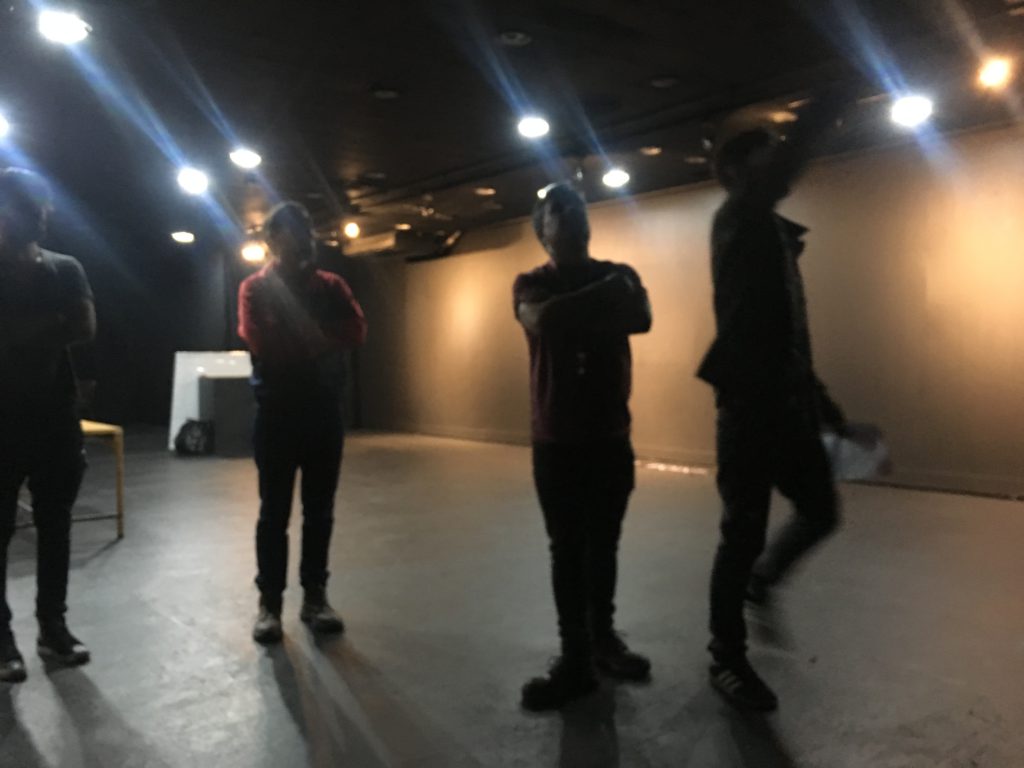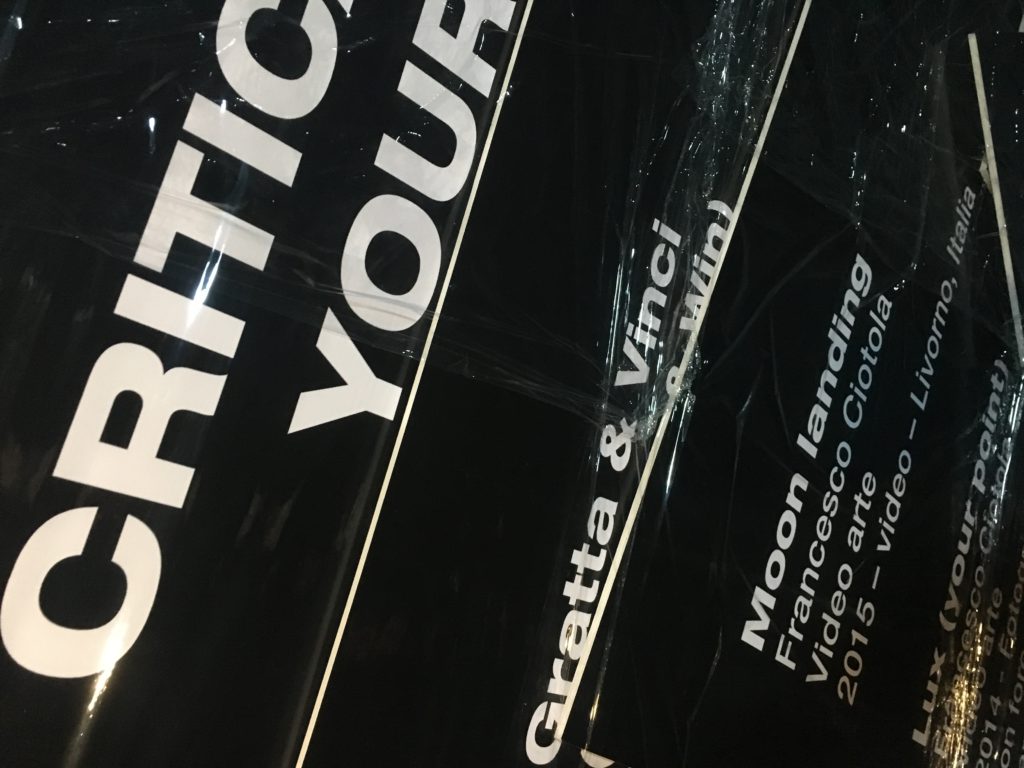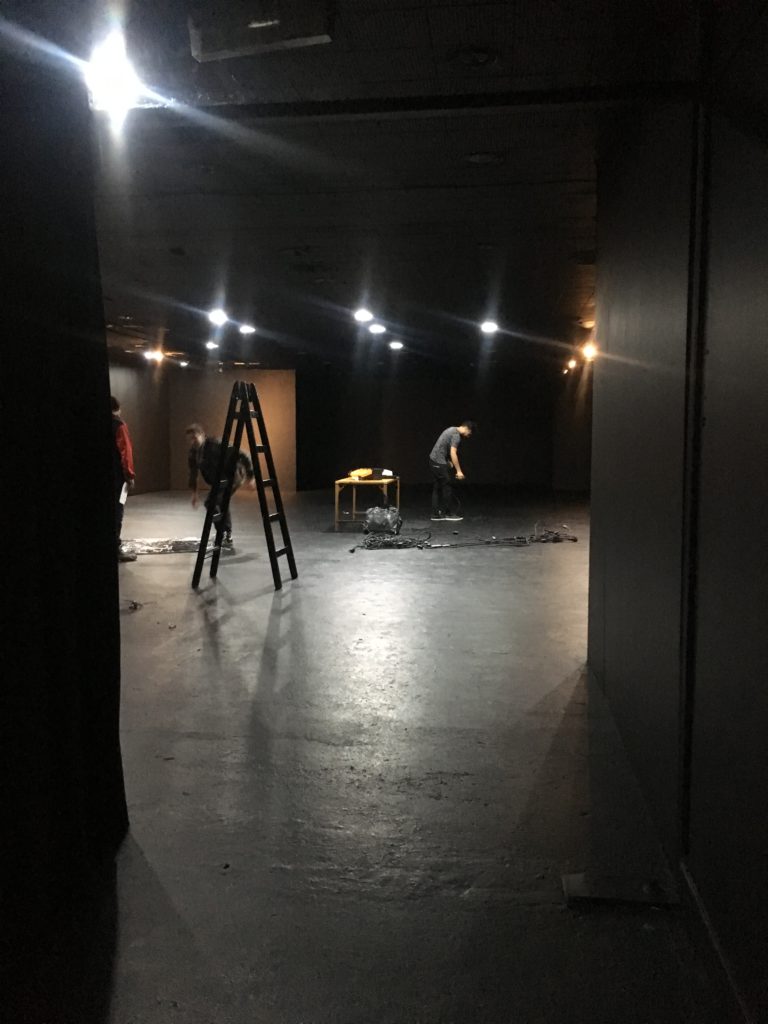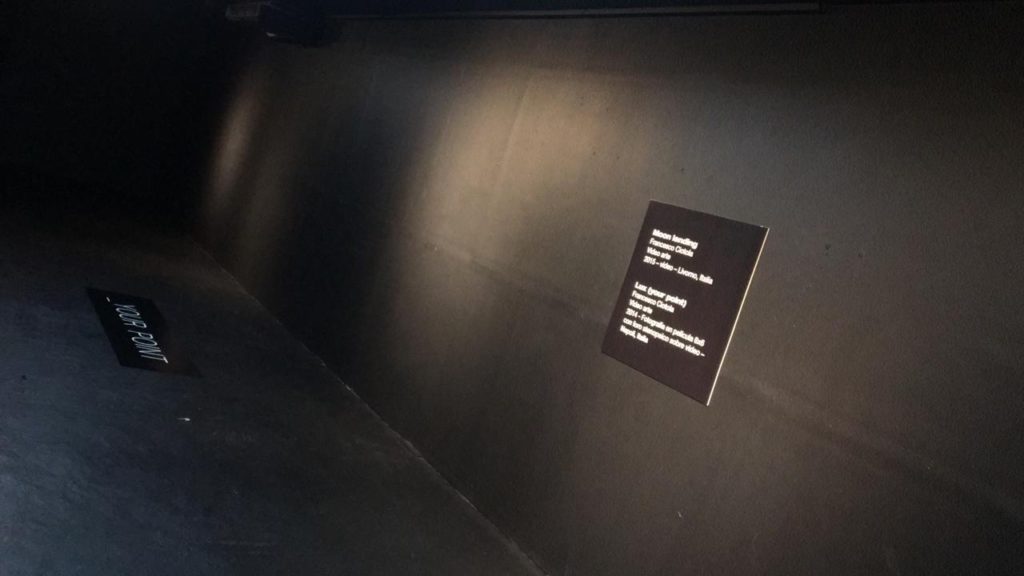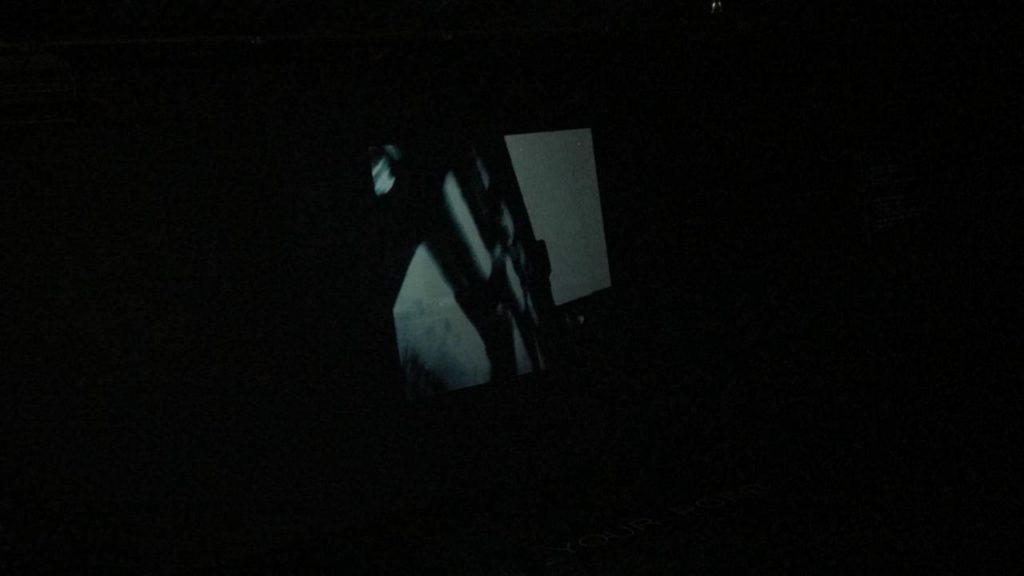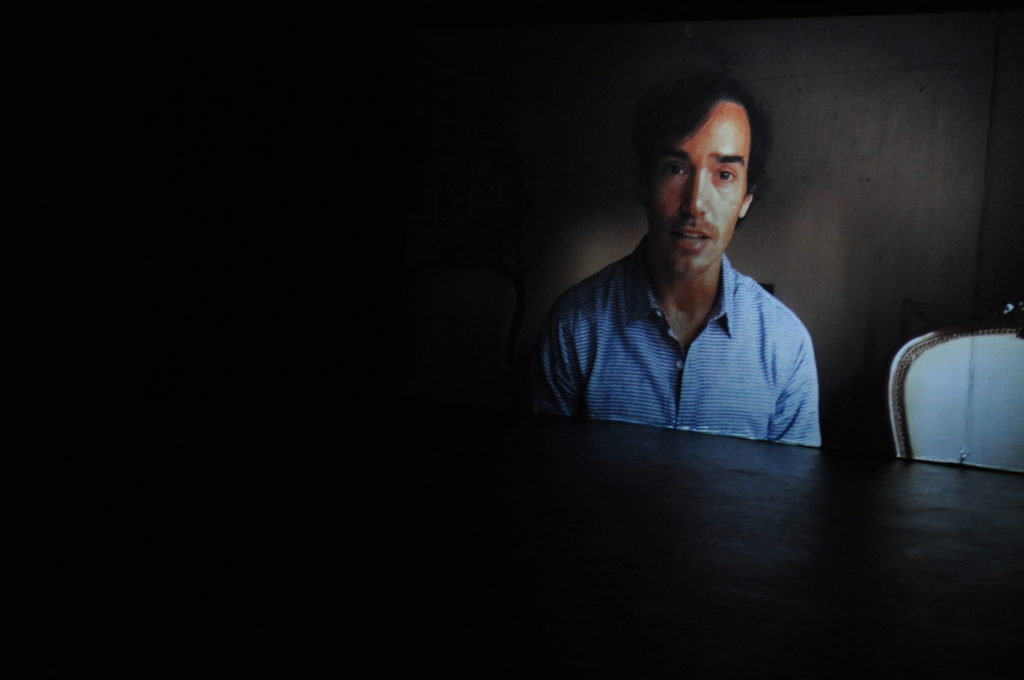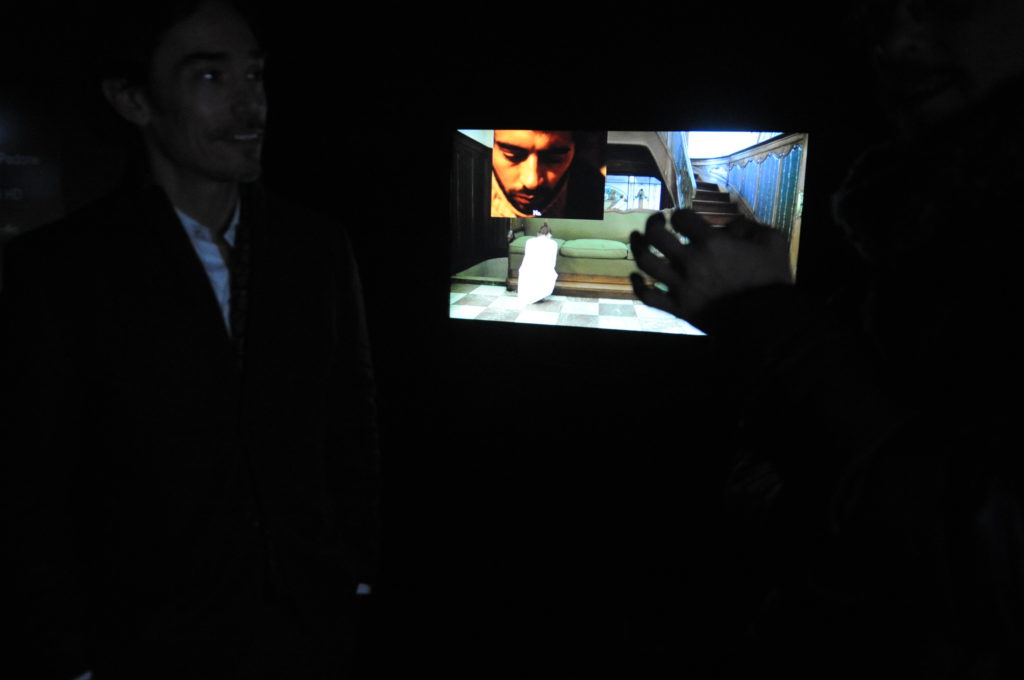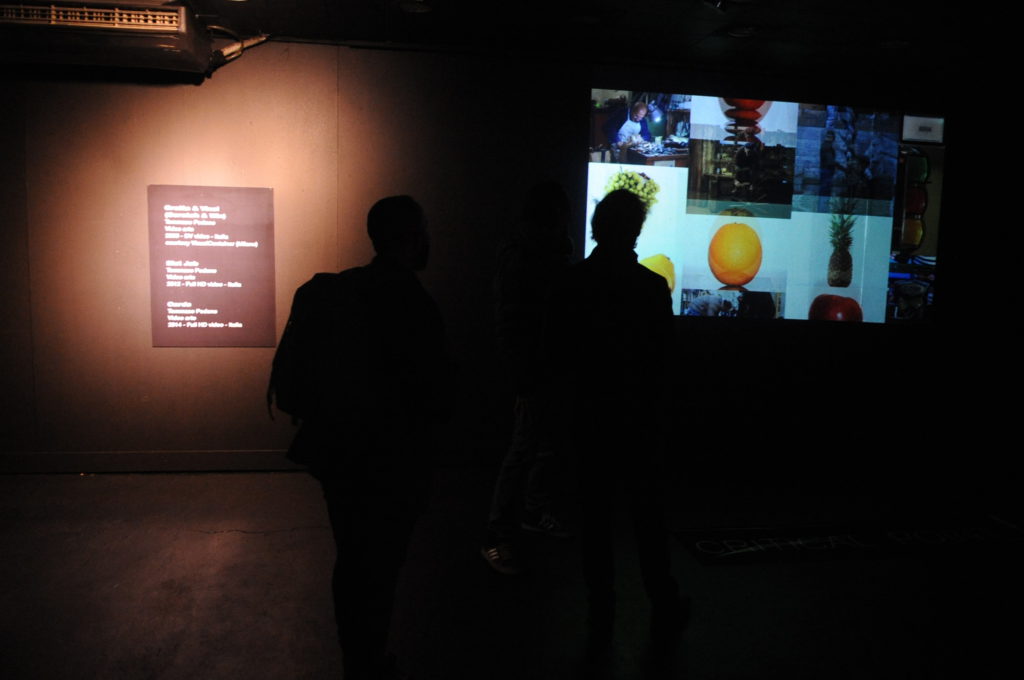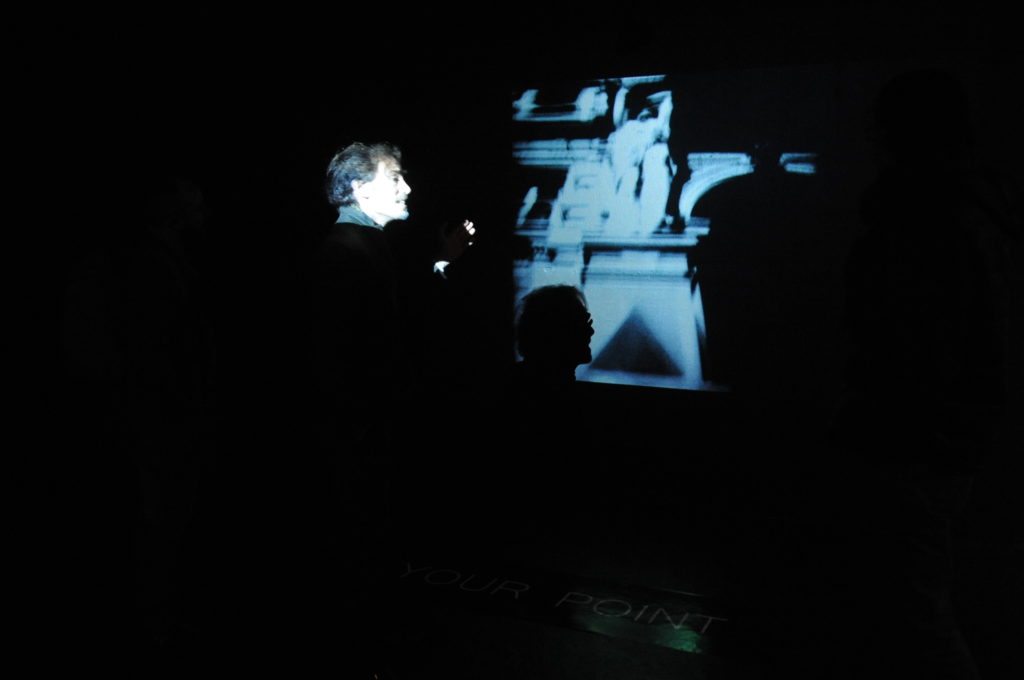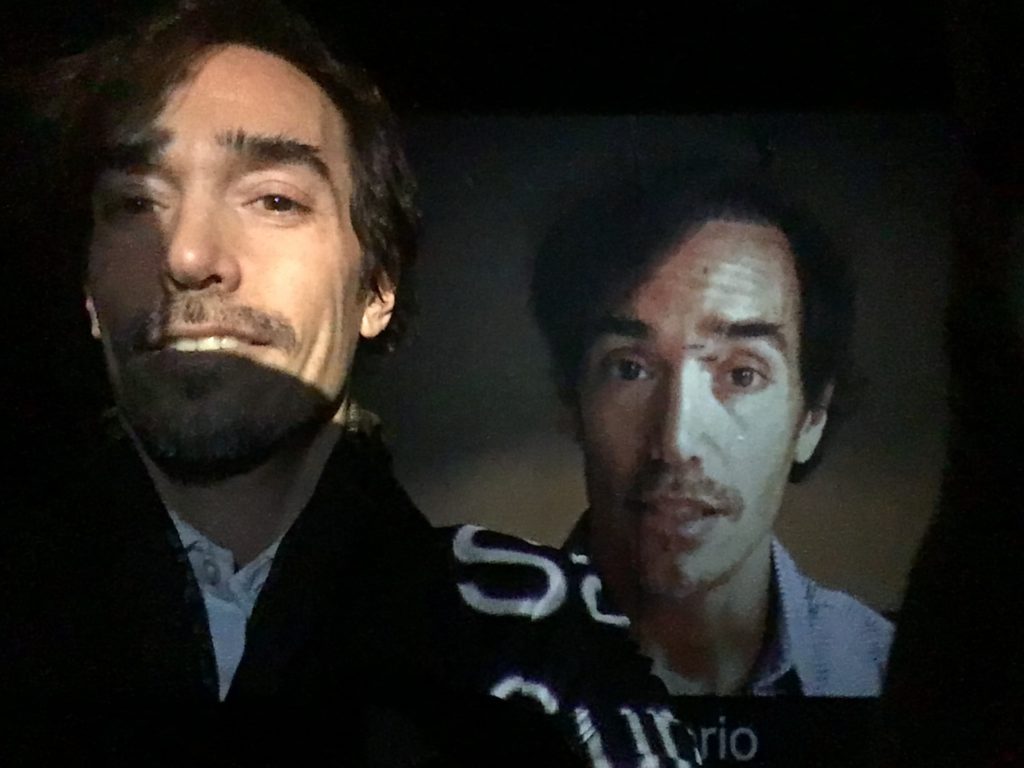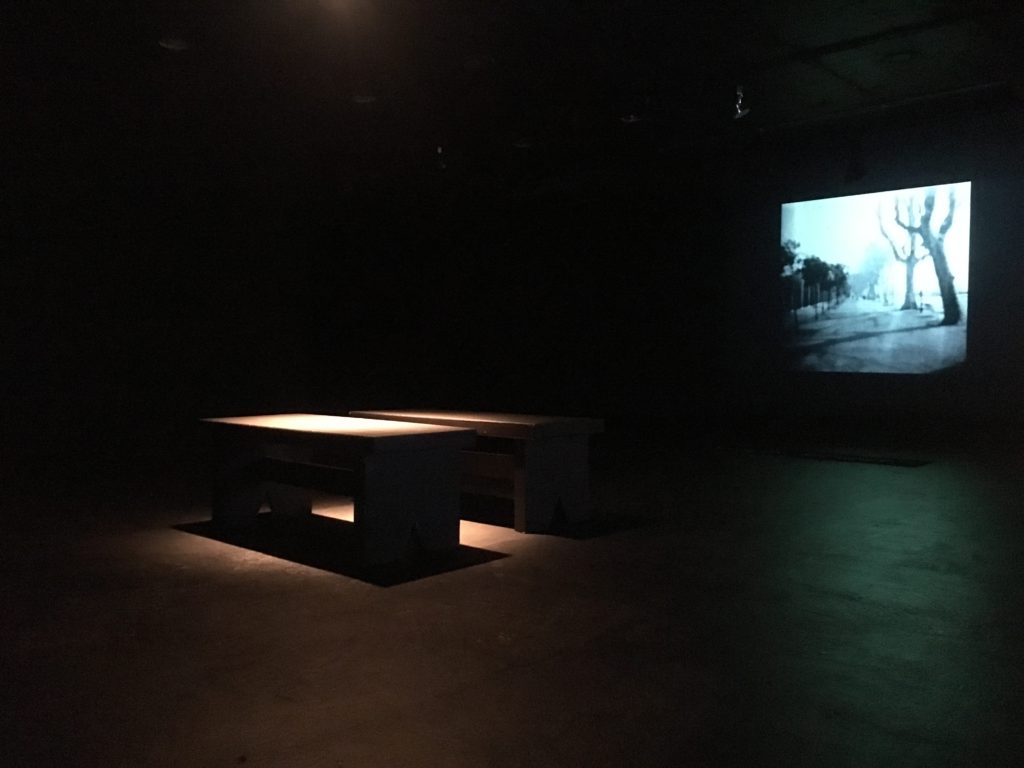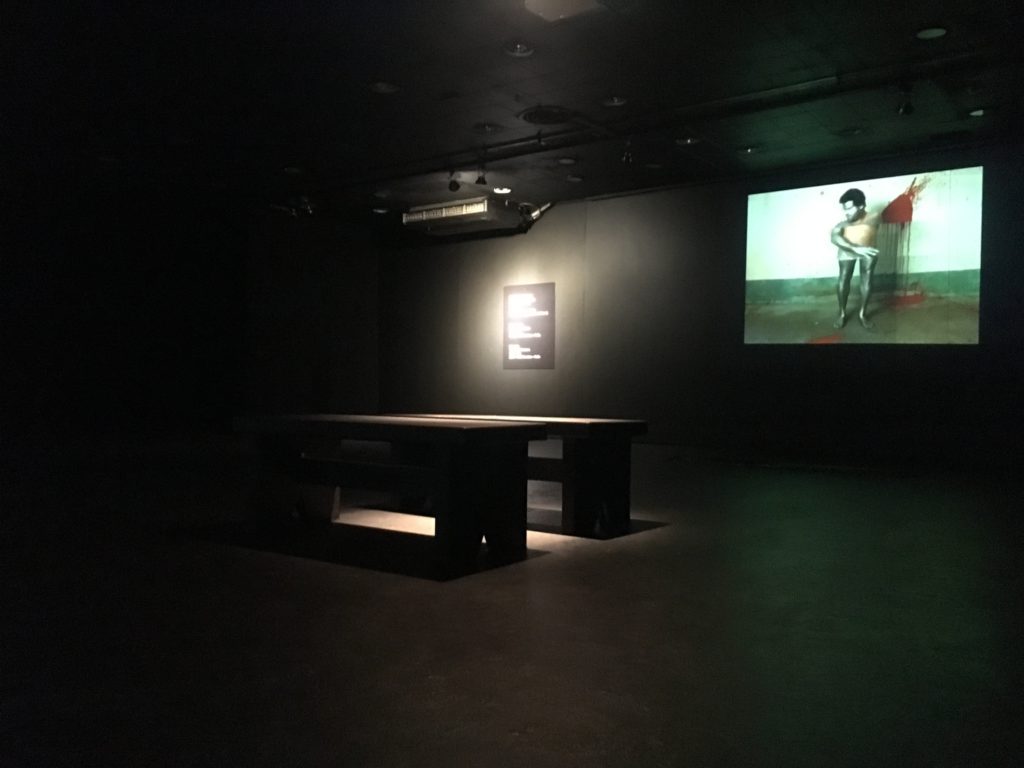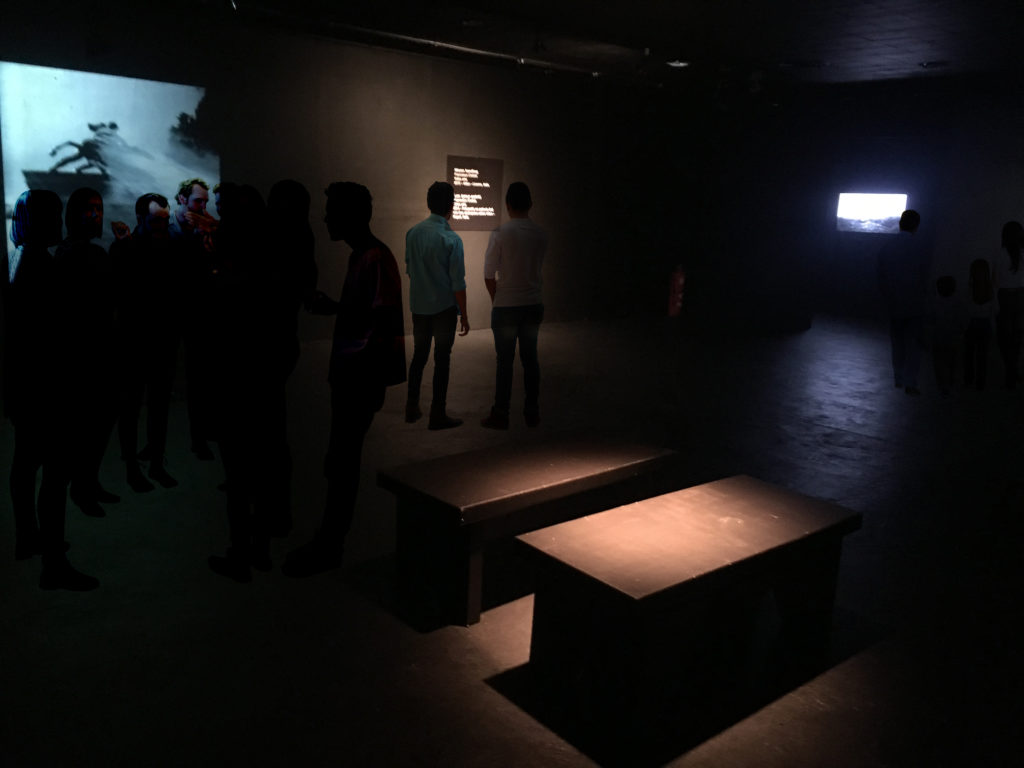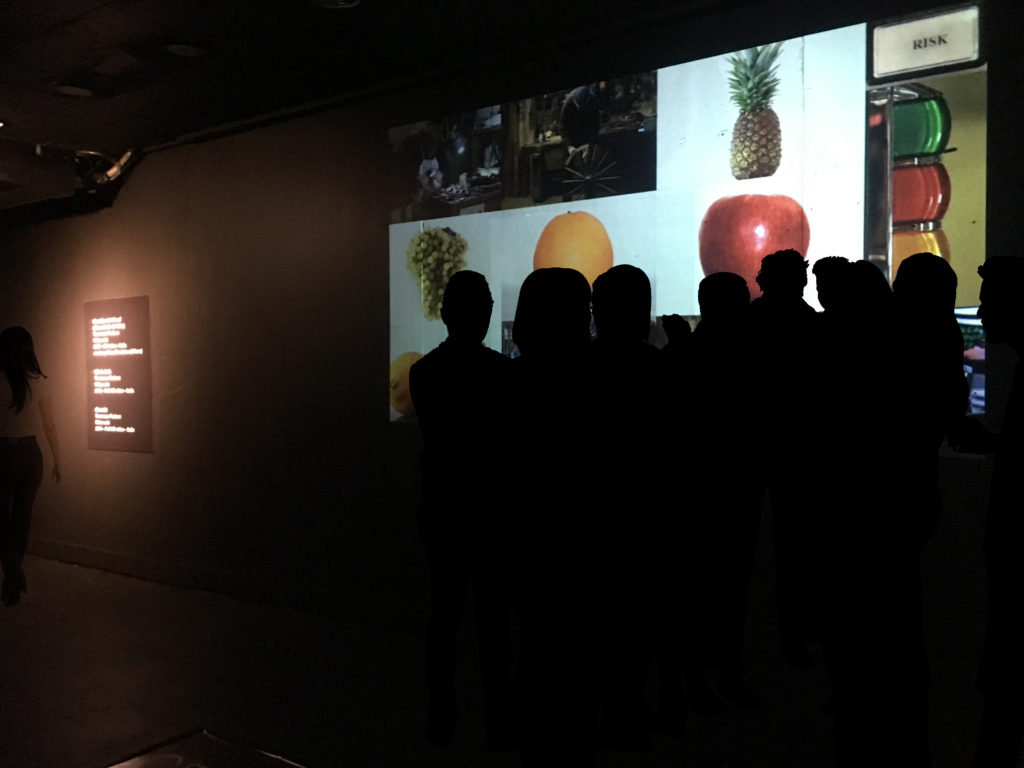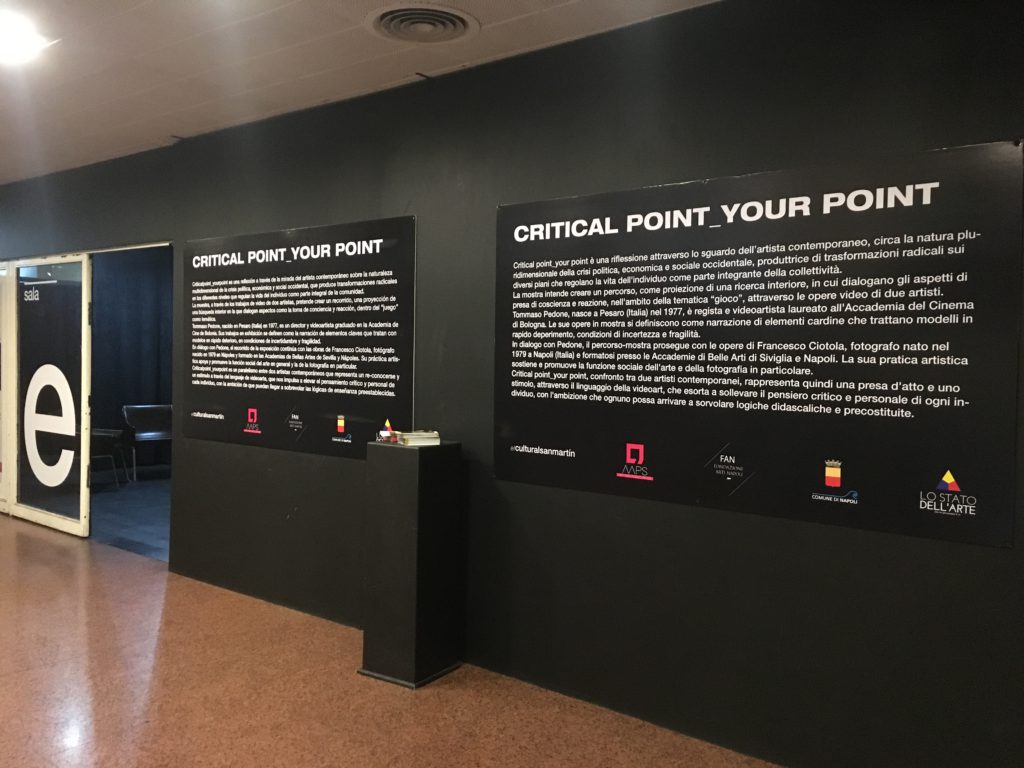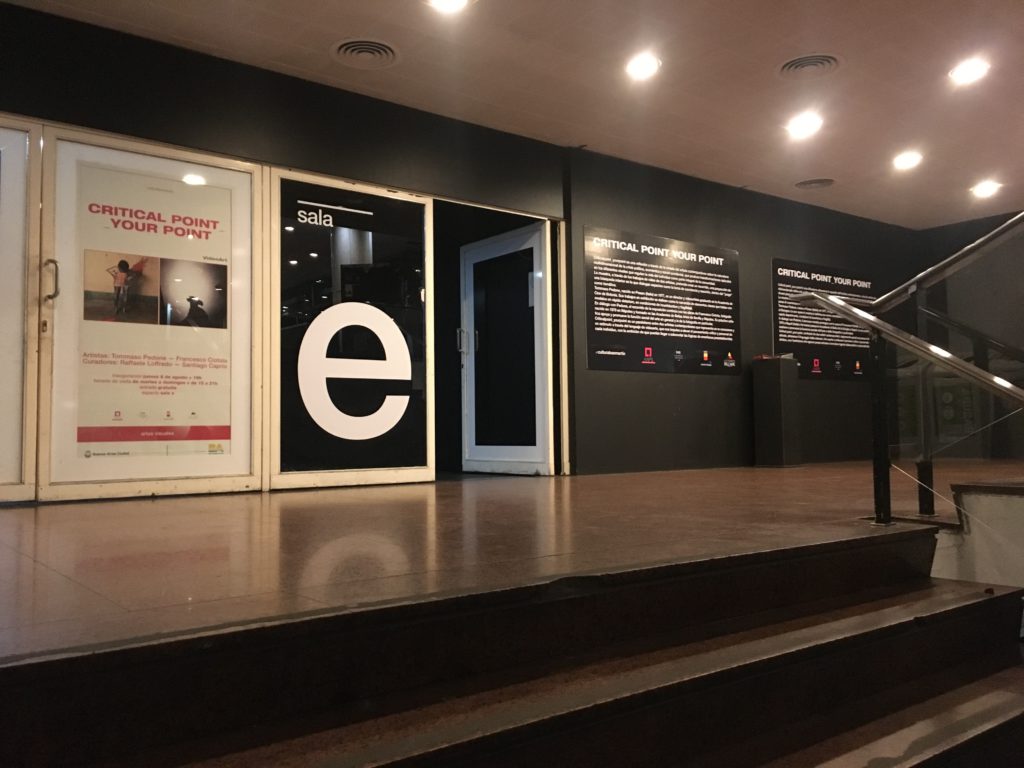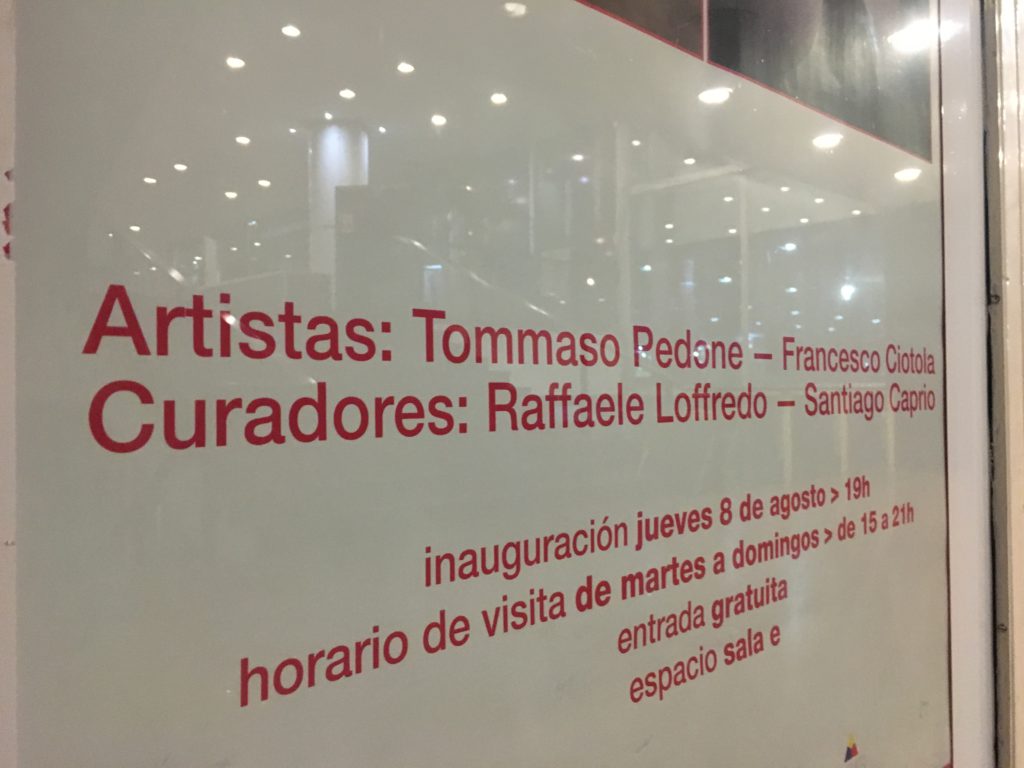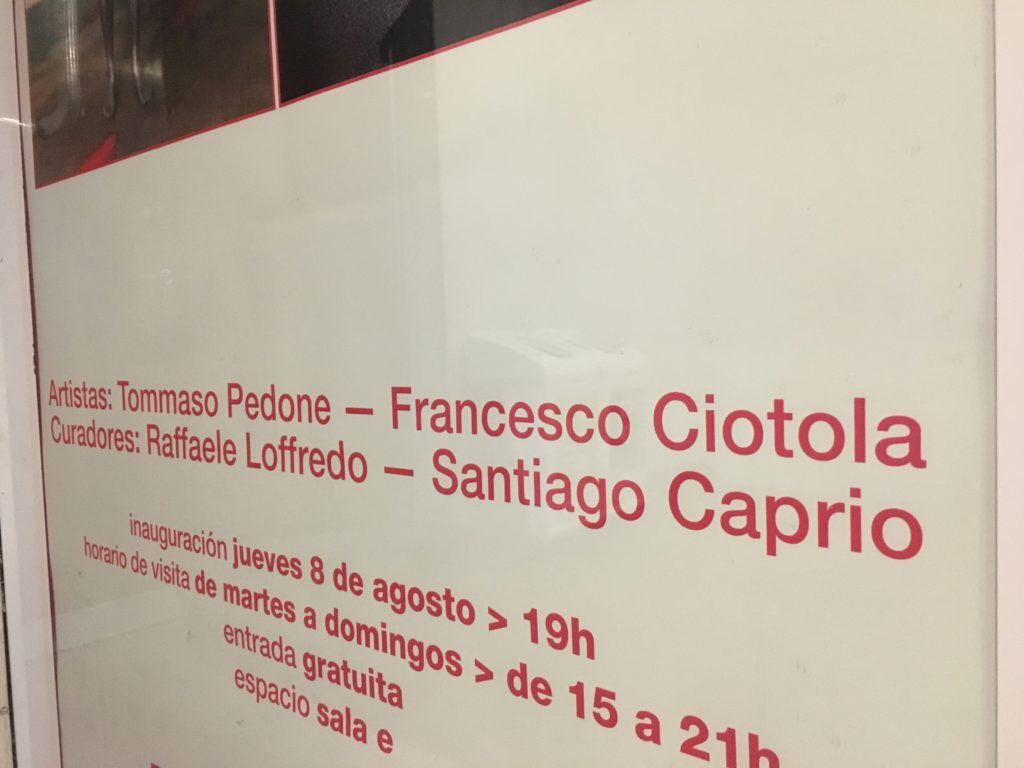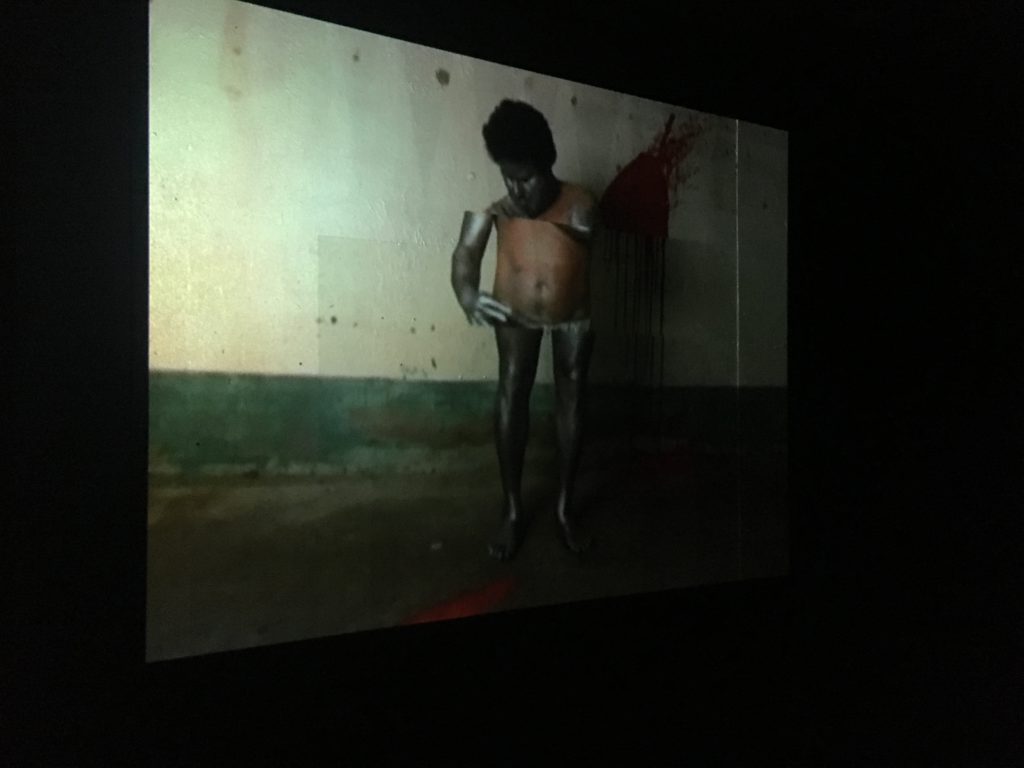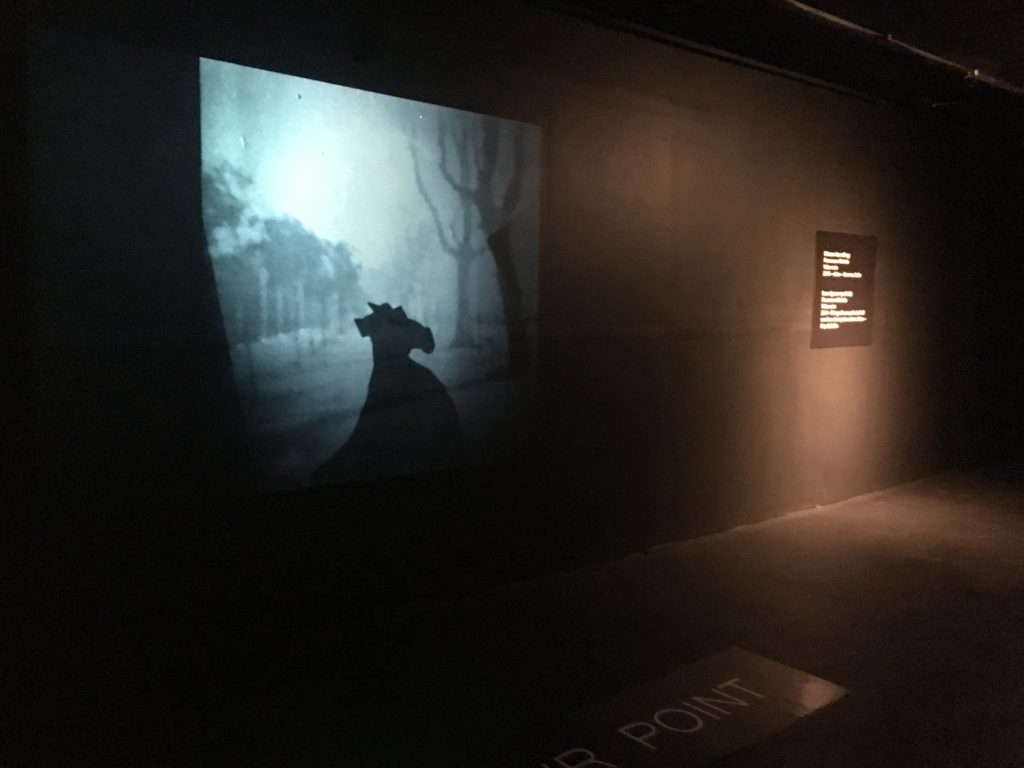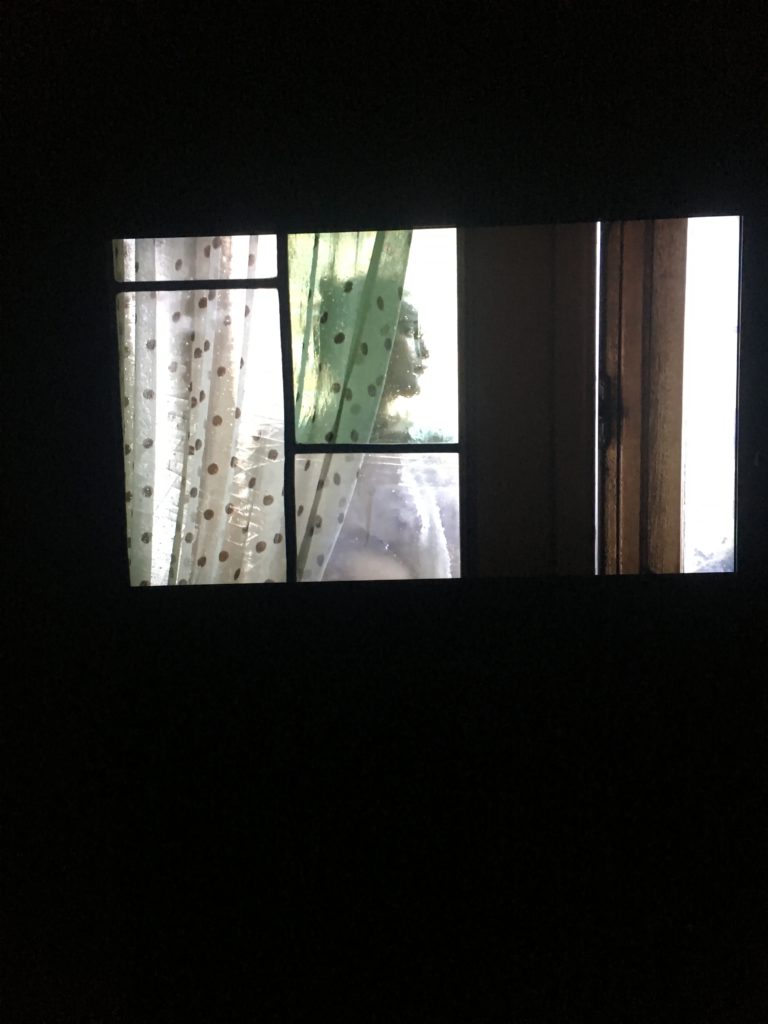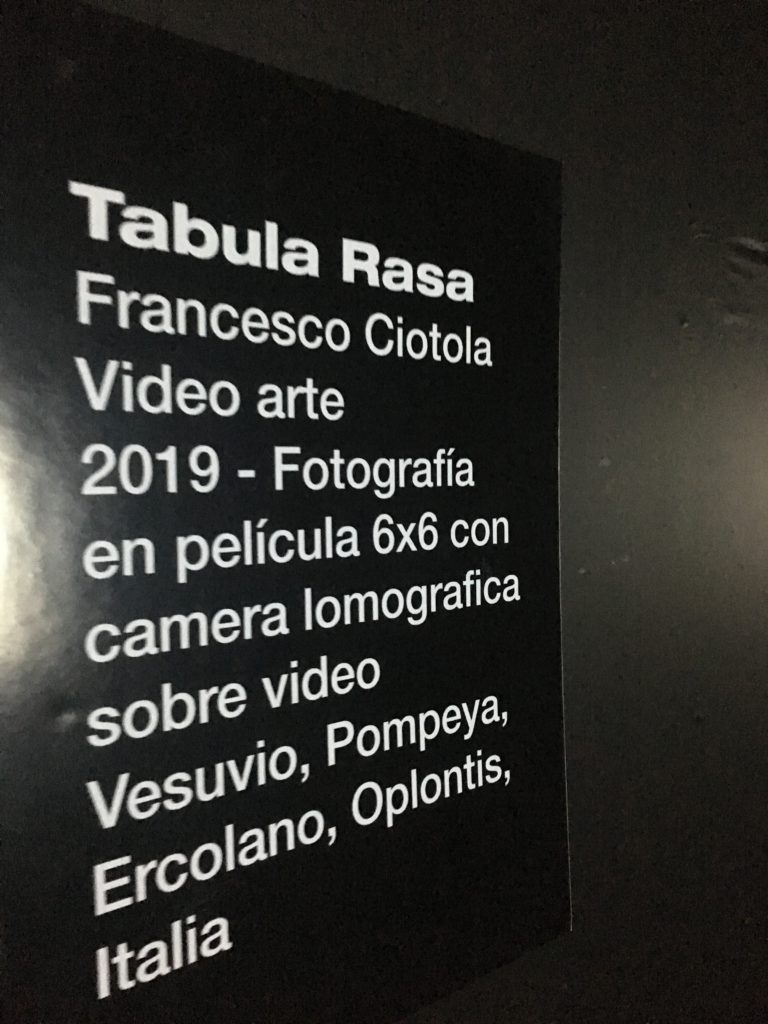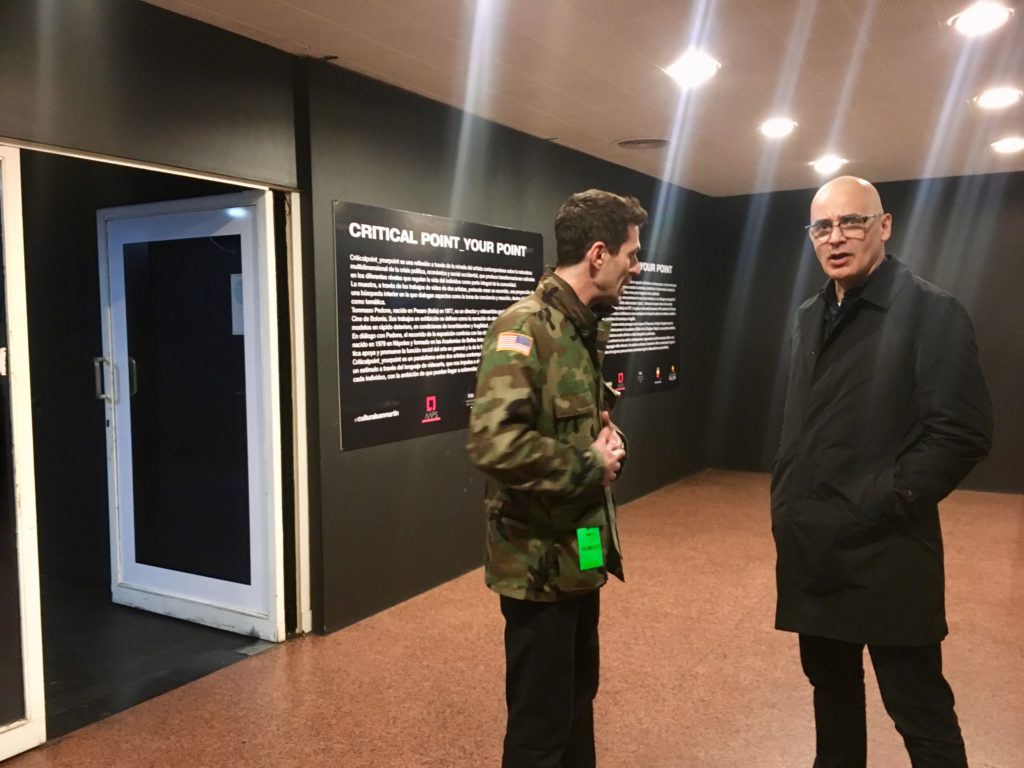Artists: Tommaso Pedone & Francesco Ciotola
Curators: Raffaele Loffredo & Santiago Caprio
Sponsorship:
Centro Cultural San Martin
Comune di Napole
FAN – Fondazione Arte Napoli
Lo Statto dell’Arte
AAPS – Art And Public Space
Critical Point, is a reflection, through the eyes of the Italian director and video artist Tommaso Pedone (Pesaro, born in 1977) about the multidimensional nature of the political, economic and social crisis that, at the beginning of the XXI century, invested western society producing transformations radicals on the different plans that regulate the life of the individual as an integral part of the community.
The practice of Pedone, which shows in the course of his artistic career a particular tendency towards the languages of Video art, is largely inspired by the themes and forms of author cinema, photography and contemporary art. His constant aesthetic research has led him to study and focus on the multiform forms of art to lead him to an incessant experimentation of different languages and practices and to create critical thinking towards political and social issues.
The Argentine exhibition, held at the exhibition spaces of the Centro Cultural San Martin traces the deep, interstitial investigation of the phenomenology of the global crisis which, in the artist’s intentions, is defined as a narration of some key elements of those identification mechanisms in rapidly deteriorating models, the conditions of pervasive uncertainty and the fragility of roles in the fabric of the economic and social fabric of contemporaneity.
Through a profound reinterpretation of some key concepts of economic depression and its transformative and profoundly incident effects in contemporary man and his everyday life – as in the work Narcissus’s metamorphosis of 2011, exploration of the myth / reality, past / present binomial nature / industry represented by the classic iconography of the fascinating boy who is mirrored in clear waters to which an image where a different Narcissus, no longer young, is interpreted by a homeless person is a counterpoint – the artist declines the complex of events and causes that produce the reversal of the perception of reality and the image of man today.
Articulating itself in a composite narrative of the perception of the crisis in Italian and international – the topics investigated are, in fact, multiple: the crisis in the labor market and its deregulation, the paradoxes that are generated in the clash between poverty and the enchantment of a possible recovery , the vicious mechanisms triggered by neoliberal policies – the exhibition presents four video works by Tommaso Pedone made between 2009 and 2012 and retraces the artistic research of the Italian artist in the field of video languages, a heterogeneous field of investigation capable of hybridizing with the different forms of art, and proposes a point of view on the illogical consequences generated by the economic crisis through the unveiling of new or unusual aspects that characterize it.
Works:
1) “GRATTA E VINCI”
2) “SLOT JOBS”
3) “CARDS”
1) Italy – 2009 – Duration: 6’00 ’’
Video: Tommaso Pedone
Performer: Alberto Mariani
First real figurative video art project realized, part of the “CRISIS” series, a reflection on the delicate Italian socio-economic moment (and, in a broader sense, international).
Second episode of the trilogy dedicated to the binomial of gambling / economic crisis, “Slot Job” focuses attention on the change taking place in the world of work, in particular of craft activities, which are gradually disappearing from the modern panorama.
3) Italy-2014 – Duration 00’55 ”
Video: Tommaso Pedone
“Cards” is the last chapter of the Crisis trilogy started with “Scratch & Win” and also includes “Slot Job”. The theme is always the binomial between the economic crisis that began in 2008 and gambling, seen as hope and awareness that salvation cannot take place through the shortest path.
The artist’s only way of salvation is to cultivate his own vision because nothing is as it seems, nothing is as it appears because nothing is real. Importance of focusing things according to one’s conscience and subjectivity because everything is extremely subjective even where it seems objective and explanations to things are much more complex than what it seems.
The artist’s task is not to conform to the thought but to raise the personal critical thought of everyone, trying not to be pigeonholed in pre-established schemes.
Francesco Ciotola, multi-talented photographer and video artist with decades of experience in the landscape and social field, dialogues with Pedone answering him through two conceptual video-art works.
Works:
1) “NOTHING IS AS IT SEEMS, NOTHING IS HOW IT APPEARS WHY NOTHING IS REAL”
2) “LUX”
“True knowledge is a vision of the mind” (Descartes)
Both of his works have to do with light and with the concept of light and ephemeral.
Light, like all electromagnetic waves, interacts with matter. Light means electromagnetic radiation capable of stimulating the retina of the human eye, producing the visual sensation.
The human visible field includes only radiation from a wavelength in the range between 380nm and 760nm. We can therefore say that light is something strongly related to our life and to the concept of perception of the world around us because its definition and its measurement depend not only on objective physical quantities, but also on the visual system of the human being.
According to the ancient thinkers like Pythagoras in fact the light consisted of a fluid emitted by the eyes that subsequently returned with the image of the object, while for Democritus it was the simulacra emitted by the objects to cause the luminous sensation in the eyes. These theories merged in Plato’s conception, which believed that light came from the meeting of two fluids, one coming from the eye and the other from the object.
Today we know that a body appears visible either by emission of its own radiation or by reflection of light radiated by other bodies.
It is from this reflection on the encounter between subject and object that the artist takes inspiration to realize this work in which everyday images converge, rewritten through the use of an unusual medium and presented again in another light.
“I was interested in emphasizing how wonderful it is to cultivate one’s vision – argues Ciotola – to talk to the world, not to conform to what in a conscious or unconscious way one feels in some form obliged to do without any reflection. Rediscover the wonder of oneself and the uniqueness of one’s own person instead of taking refuge behind, at best, useless and artifacts with pseudo-smiling / sensual three-quarter self-portraits to communicate one’s being in the world in a banally legible way by a code stereotyped created and fomented by the media. I firmly believe that if everyone put himself in everything he does instead of adapting to lobotomizing codes it would all be more interesting. “
This work is made entirely with a pinhole, an instrument that in its own way is the most suitable for an absolutely pure reading of light. The camera with pinhole camera produces blurry images, because in the absence of lenses, the light rays reflected by the subject diverge and create small circles giving way to images to take shape only and exclusively through the light reflected from the subject.
